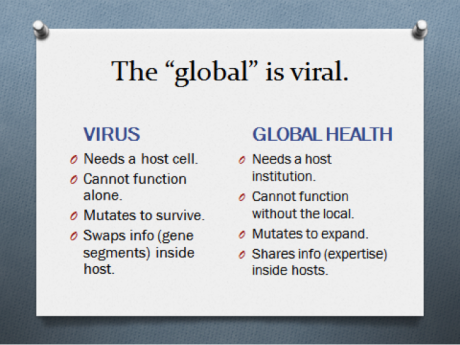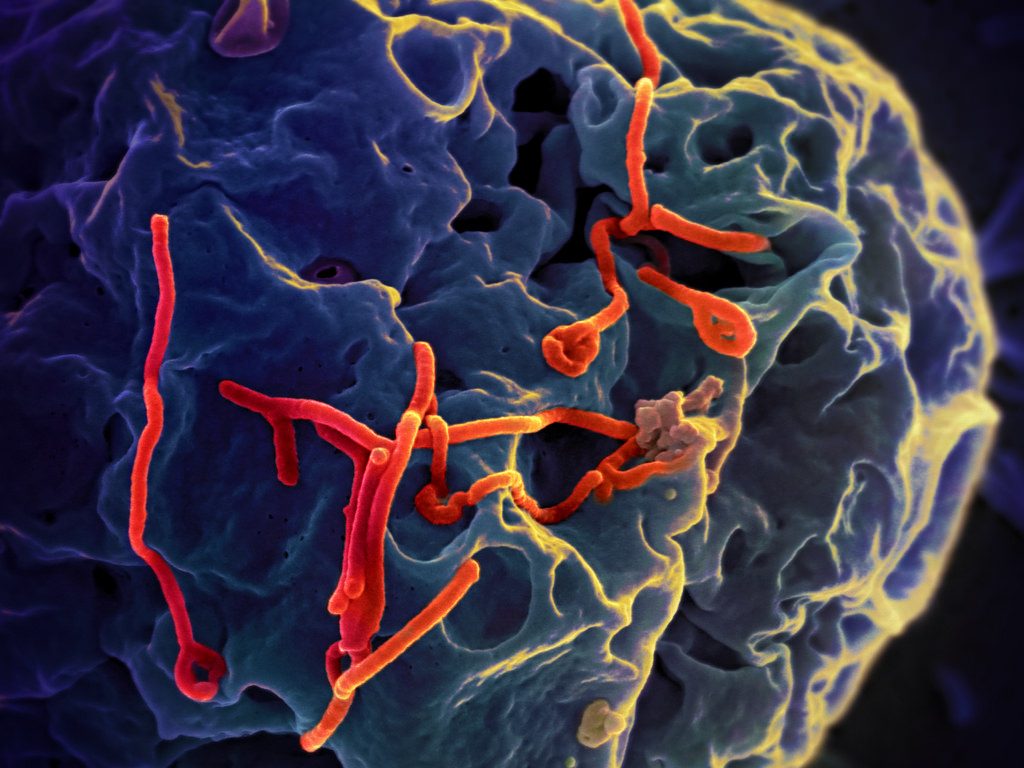If there’s one thing that the continuing Ebola outbreak in West Africa should have taught us by now, it’s this: Global public health per se doesn’t exist.
At least not in any type of substantial, material way that might have made our collective response to this devastating epidemic more effective at a far earlier stage in its development. Global health is more concept than concrete reality. What we think of as “global health” is an idea or an organizational model for an integrated international network of health professionals capable of responding to an outbreak of infectious disease anywhere, anytime. But as it currently exists, or at least as it is defined by the various institutions that embrace that label for their projects—a long list that includes everyone from the U.S. Agency for International Development (USAID) to Médecins Sans Frontières (MSF; Doctors Without Borders)—global health remains more aspiration than actuality.
In the current Ebola crisis, the World Health Organization (WHO) is the symbolic figurehead of the global public health network. As such, it carried the brunt of the blame for the slow-paced international response to the outbreaks in West Africa. Initial cases in late March garnered a speedy response, with a whole host of international experts descending on the scene in Guinea and Liberia (including an large team from the U.S. Centers for Disease Control [CDC] Epidemiological Intelligence Service). But, experts argued, the international response did not adequately escalate in proportion to the threat the Ebola virus posed as the situation worsened. It took months for the WHO to issue a public health emergency of international concern (PHEIC), a crucial action in terms of gathering the necessary increased resources, funding, and staff needed to combat the virus effectively. In this sense, “global” health seemed to fail in one of its key tasks.
The WHO, in many ways, is global health. The WHO exists to organize international resources, to be an information hub for all signatory members, to keep tabs on chronic and infectious diseases affecting health everywhere, and to alert member nations when a local outbreak threatens to spread internationally. It also sets international health standards, requires member nations to have actionable epidemic response plans, and advocates for health as a basic human right. As part of this mission, it rallies member nations around central goals for development and disease eradication. As a global institution, the WHO’s fundamental mission is to promote health and equal access to health care no matter where individuals are located on the world map. But as an entity whose duty it is to stand vigilant against the spread of infectious diseases around the globe, the WHO is not even half as big as it would need to be to do the job on its own. It simply doesn’t have the materials to do so.
Global public health is much like a virus. Like the viruses it helps to eradicate and control, global health cannot survive outside of a healthy “host.” The global health network requires the existence of effective local and national public health agencies to function at all. And this “global” network only pulses into material being during large-scale, widespread events such as an influenza pandemic or the current Ebola crisis. The remainder of the time, during more routine outbreaks, it exists in a state of perpetual readiness and watchfulness. Most of the time, the global health network is in a dormant state.
In other words, global health is as viral as the microbes it is called on to battle.

Global health shares information virally, it reconfigures itself in response to each unique challenge, and it uses local resources to get its work done—just like the viruses it attempts to contain. And, like a virus, global health needs a “healthy” local host to function effectively. In other words, if the local public health systems are weak where an outbreak occurs, then the global response will be slow or ineffective (as was the case in Liberia, Sierra Leone, and Guinea). Global health responses are nothing more than collectives of other experts pulled from local, regional, national, or international organizations. The response teams cobbled together by WHO form a viral network of experts: that network can’t survive or thrive by itself. That’s why shared field experience and multilateral tabletop exercises form the backbone of the global health network. As experts, we are viruses ourselves: we need to be in the same location, working collaboratively, to swap information and form the social bonds so crucial to building effective networks.
As I learned while interning inside the global health division of the CDC, experts who work under the rubric of global health are skilled and dedicated to the concept of global health, but their efforts largely remain chronically underfunded and understaffed. There just aren’t that many people doing global surveillance or working on response on a global scale.
Contrary to our imaginings, and as so many epidemiologists working in international arenas will attest, no global health “batcave” exists. There isn’t a central location stocked with supplies ready to ship out, genius inventions like rapid diagnostics (which are, at this point, more futuristic goal than actuality), or unlimited resources (in the form of extra staff or unlimited funds). When an emergency signal goes up and an outbreak threatens to spread— like it did in March of this year when Ebola first reemerged in Guinea—the WHO’s Global Outbreak and Alert Response Network (GOARN) is jolted out of dormancy, or “activated,” and responds quickly. But to escalate its initial response, the WHO has to patch together staff, supplies, and additional funding from partner agencies and institutions. A global response to a local epidemic like Ebola is fraught with difficulties, not least of which is that every outbreak is not only a biological, but a political, situation. The WHO cannot make unilateral response decisions; it has to be officially invited into a country, negotiate with local authorities and experts already working in the affected countries, and work out an operating plan. Agencies or nongovernmental organizations (NGOs) that take part in “global” responses, such as the CDC or MSF, also have to find available and trained staff to place on a response team. All of this takes time, political savvy, logistical genius, and experience. Even when a signal works seamlessly to trigger a rapid response, the results, as we’ve so tragically seen, can be less than perfect.
One reason for this is responders come into the field organized into separate, typically nation-based, teams due to the fact that a “global” response is dormant until activated. Different local, national, and regional public health agencies have different protocols, routines, and priorities. In other words, while they share similar goals, they have unique cultures. These institutional cultures—despite being united under the rubric of global health—remain distinct. Experts from different national agencies, various NGOs, and WHO all rely on a tacit understanding of their own internal cultures to do their jobs. They also may come into the field with different assumptions about which response activities should be prioritized. In the current crisis, MSF director Joanne Liu criticized the emphasis on building isolation centers in the region—a response activity spearheaded by the United States—arguing that other activities, such as training more local staff to fill those centers or sending more teams into remote regions, should take precedence. Such public disagreements merely highlight the different institutional cultures at play, and suggest that a united “global” response remains more ideal than reality.
Global health response, at best, is a group of functioning, healthy “host cells” infected with the same virus. In the Ebola outbreak, that virus is pure information. Being a part of the global response network means access to the latest clinical, lab, and epidemiological information. Sharing in the network, swapping good information, is what formulates “global” health response in the first place. This includes fostering an increased awareness of distinct institutional cultures and their effects on coordination in the field. A more collaborative rethinking of existing “global” protocols—ones that clearly prioritize activities and designate team leads for each response activity—would go a long way to ensuring less friction between disparate “hosts” during a crisis. Increasing the frequency of multilateral practice exercises during “down times” would also help familiarize experts with the institutional cultures and thought styles of their far-flung peers. By understanding how the global is viral, we might learn to strengthen local infrastructures and craft improved—and more effective—responses to outbreaks of deadly infectious diseases.
